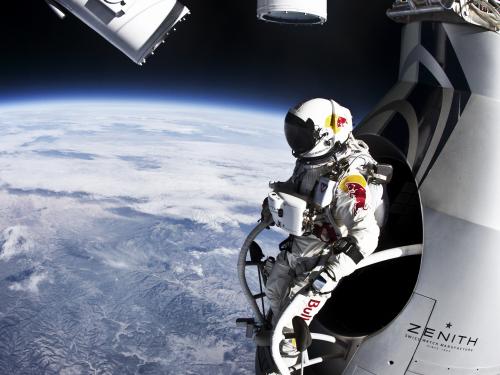


Jul 27, 2018
By Hillary Brady
If you catch a screening of Mission: Impossible – Fallout this weekend (no spoilers, don’t worry!) you’ll see Tom Cruise performing all sorts of action sequences: running and rappelling and racing by on a helicopter, all set to the film’s iconic dramatic score. One of the film’s most memorable sequences is of Cruise performing a HALO jump through a lightning storm. All narrative dramatics aside, the HALO jump is a real—and dangerous—military maneuver that’s been used by special forces teams for decades.
“It takes discipline to jump out of an airplane, probably at night in the clouds at a high altitude."
HALO is an acronym for “high altitude, low opening.” That means that military special forces teams will jump out at a high altitude (generally 30 to 40 thousand feet), and they’ll freefall to a much lower altitude (as low as about 800 feet above the ground) before they deploy their parachutes.
To grasp how intense this is, aeronautics curator Russell Lee recommends this comparison: If you were to go freefall parachuting, your plane could go no higher than about 15,000 feet, and your parachute would automatically open at about 3,000 feet above the ground. (Not quite as high altitude or as low opening as a HALO jump!)
Just like Cruise’s character does in the movie, these types of maneuvers are used for stealth, primarily to bring the jumpers into a hostile region. By keeping the aircraft up high, it can remain out of range of anti-aircraft fire and surface missiles. It was a tactic used in missions during the Vietnam War, Operation Iraqi Freedom, and even in the Navy SEAL rescue of Captain Phillips in 2009.
While the high altitude brings cover, it also brings substantial danger—lack of oxygen being top among them. If their pressurized equipment fails, it would be a matter of seconds before the HALO jumpers pass out from hypoxia.
“It takes discipline to jump out of an airplane, probably at night in the clouds at a high altitude. You can’t see the ground, just jumping off into black space. It has to be done in a careful and rehearsed manner,” Lee said.
In the film, Cruise actually does this risky stunt himself, making him the first actor to ever complete a HALO jump on screen. To surpass that milestone, Cruise and any other adrenaline-seekers may have to look to record breaking parachutists like Joe Kittinger (from 102,800 feet) and Felix Baumgartner (from 128,100 feet) for inspiration—you may even say it’s their next mission, should they choose to accept it.
Tom Cruise filming a HALO jump scene for Mission: Impossible — Fallout. Credit: Paramount Pictures



We rely on the generous support of donors, sponsors, members, and other benefactors to share the history and impact of aviation and spaceflight, educate the public, and inspire future generations. With your help, we can continue to preserve and safeguard the world’s most comprehensive collection of artifacts representing the great achievements of flight and space exploration.
We rely on the generous support of donors, sponsors, members, and other benefactors to share the history and impact of aviation and spaceflight, educate the public, and inspire future generations. With your help, we can continue to preserve and safeguard the world’s most comprehensive collection of artifacts representing the great achievements of flight and space exploration.